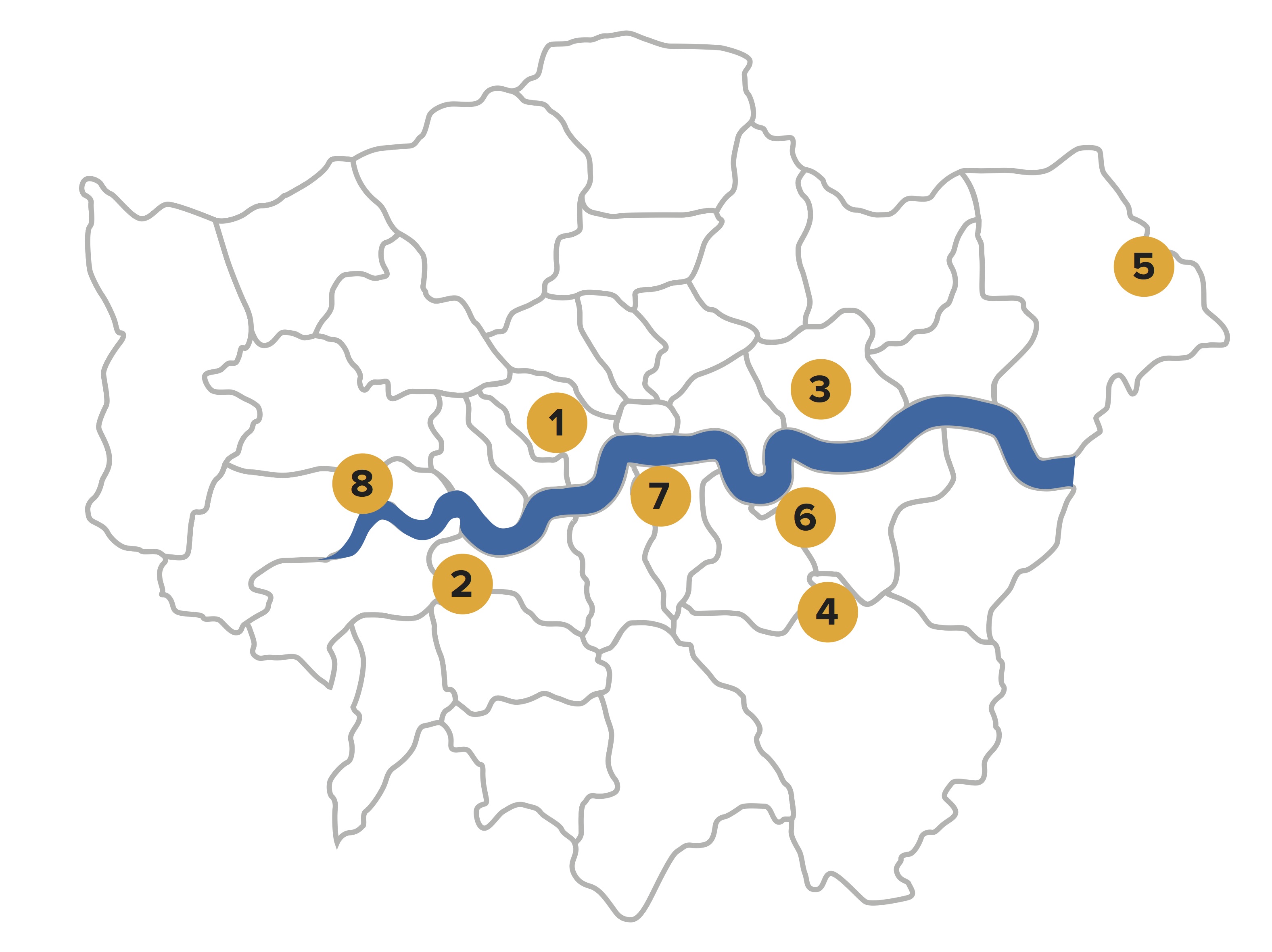Post
ARCHIVE | The London Society Mini-Guide to Conservation Areas
12 May 2020
From The Journal of the London Society number 471 (Spring/Summer 2017). Mark Prizeman looks at some of the best of the capital's conservation areas.
There are now 1,028 designated conservation areas within the 33 administrative districts of Greater London, with 535 being in the 13 inner zones. The densest populated borough, Islington, is 50 per cent conservation area whilst the most desired, Kensington & Chelsea, is 70 per cent. Richmond-upon-Thames has the most designated areas (72) and, Barking the least (four). This brief and perhaps biased selection derives its inspiration from the London Society book London of the Future (1922), which contains a lot more great stuff.
1. The Portman Estate, Westminster
- One of the first five conservation areas to be designated in 1967. This major and coherent development was built at the time of the French Revolution and includes all four ‘rates’ (as Georgian houses are sized) of houses arranged with their mews ancillary dwellings in a gridded layout. What is now a very smart part of the West End was pretty shabby in the 1960s having absorbed the population that had lived on the site of Marylebone station and its goods yards. The Lord Montagu of Beaulieu in his essay on 'Commercial Aviation and London' in London of the Future proposed a glass aerodrome be built over it. Getting there: Start at Marylebone station and work south to Marble Arch
2. The Alton Estate, Wandsworth
- A unique collection of architectural styles (Georgian, Victorian and Post-War/Modernist). Within this 18th century landscape of fine villas bordering Richmond Park and the Roehampton Estate (as it was known) is a seminal 1958–59 London County Council (LCC) housing development, led by Rosemary Stjemstedt, built at a higher than average density. It is a fantastic landscape of open spaces, which fails in only one shortcoming – not anticipating parking for all those cars that would be whizzing around Abercrombie’s ring roads. Getting there: Southwest trains from Waterloo to Putney or Barnes, then local bus
3. The Bungalow Estate (also known as the Mayfield Estate), Redbridge
- Designated a conservation area in 1991 to protect this low-density rolling landscape from the inherent danger of loft conversions. The relentless sprawl of the suburbs choking the routes in and out of London was the major component of the London Society’s 1919 Plan. Here is an example of 1920‘s sprawl at its most indulgent – low rise villas for heroes set amongst mature trees and large gardens. Getting there: Rail from Liverpool Street to Seven Kings
4. Chislehurst, Bromley
- One of Greater London's largest conservation areas, it sits as an exemplary lump in the Green Belt retaining large green areas that would have been sprawled over years ago had it not been for Napoleon III and his residence here after his disposition – the telephone code is still 467 or IMPerial 1234. It retains a distinctive village atmosphere and like other conservation areas such as Heston (Hounslow), Wanstead (Redbridge), Monken Hadley (Barnet), Mitcham Cricket Green (Merton), and Havering-atte-Bower (Havering), present a slow accreditation of the vernacular without any overall hand in the design. Getting there: Southeastern trains to Chislehurst
5. Gidea Park, Havering
- An example of an affluent planned development along the Parker Unwin guidelines being developed by a trio of politicians as an o shoot of Hampstead Garden Suburb. Romford Garden Suburb was built in two exhibition areas of 1910/11 and of 1933/34 and contains a variety of Arts & Crafts and Modernist designs, including a model home by Berthold Lubetkin. Though thrift in construction was an aim, the standard of design and detailing is very good. Getting there: Rail from Liverpool Street to Gidea Park Station
6. The Progress Estate, Greenwich
- Another Garden suburb, this time built not for the affluent but for Woolwich munition workers in 1915 in a 17th-century style. Built at an incredible speed, it manages to uphold its design ambitions and provide the goals of the garden suburb to the working household. It has a twin by the same architect, Sir Frank Baines in North London; Roe Green Village 1916 (Brent) built to house aircraft workers and apparently constructed by Prussian PoW labour. Getting there: Southeastern trains to Eltham
7. Roupell Street, Southwark
- These tiny dwellings tucked in beside Waterloo Station are survivors of the type of urbanism despised as slums and cleared away with reckless abandon until the 1970s. In his essay 'The Surrey side' in London of the Future, Paul Waterhouse describes the area as taking the form of 'warehouses and gloomy business establishments to which the name of architecture may enthusiastically be denied'. His proposed scheme for the area would have wiped the place clean. Getting there: Waterloo, Waterloo East, or Southwark
8. Strand on the Green, Hounslow
- A picturesque Thames-side collection of houses, pubs, and old industrial buildings, which now sits in the shadow of the conjunction of the N/S circulars and the M4, and the new Brentford football ground. It attracts celebrity residents for its vernacular rough-and-cut nature. These rural remnants are now protected pockets in a wider, faster and larger world, like museum pieces in a cabinet of curiosities. Getting there: Southwestern trains to Kew Bridge
